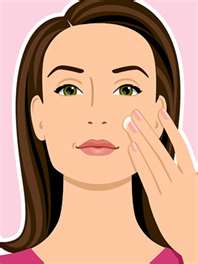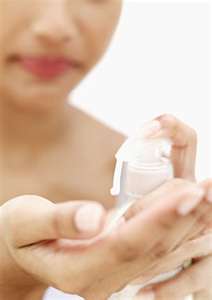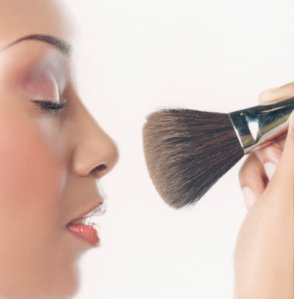I rarely, if ever, meet a woman who doesn’t need make-up. But I do regularly meet women who either refuse to believe that they will look better with make-up or say that they do not have neither the time or inclination to apply make-up. Make-up doesn’t need to be complicated to look good, and with so many make-up products out there even the most make-up phobic person can find some easy and quick products to use that will make them look great.
So if you are make-up phobic or a make-up hater consider how the following products are all easy to use and are all going to make you look much better, yet natural. Just one note about natural looking make-up – these tips are not meant to help you achieve a “no make-up, make-up look”. The “no make-up, make-up look” takes a lot of products and a real time committment to achieve. These tips are meant for those people who currently leave the house with a bare face.
Everyone needs a good concealer: Even if your skin generally looks smooth and even toned there is going to be a time when you’ll need to cover-up dark undereye circles, blemishes, redness, and hyperpigmentation. For that reason I cannot stress enough how important it is to have a concealer at home in order to correct skin imperfections. I refuse to leave the house without undereye concealer. Sometimes you can use the same product under your eyes as you can on your face, other times you need separate products.
There is a foundation out there for everyone: If you really feel like you don’t want to apply make-up in the morning consider this – a flawless looking complexion goes a long way in making you polished and put together. You don’t even need foundation all over your face everyday. You can place foundation (and blend well) in the spots where you feel you need it most. No one truly has a flawless looking complexion – that is why foundation was invented. Pressed powder foundation, applied quickly with a fluffy brush, is the perfect foundation for almost everyone in particular those people with acne or those with normal to oily skin. Pressed mineral foundation powder goes on lightly and smoothly and gives you an airbrushed looked. For those who skin is on the drier side try a tinted moisturizer which is a great 2 in 1 product – you get the moisture your skin needs while easily evening out your skin tone. The result is very natural.
Make sure your Brows Look Great: I cannot emphasize enough the power of a well-groomed brow enough. Everyone has a different idea of how their brows should look – thin or thick, high arch or low arch – in the long run it matters less than making sure your brows look great. This also means for many people filling in their brows with brow powder or brow pencil (or both). Try it for a few days – you’ll notice that as soon as your brows look good you look more polished instantly.
Use Some Eye Make-Up: Mastering eye make-up can be complicated. I’ll admit that I am still working on mastering liquid eyeliner. It’s my Achilles heel. Great looking eye make-up doesn’t need to be complicated. Consider just curling your eyelashes and applying some mascara. Instantly you look better. There is no need to apply three different shades of eye shadow everyday. Find a shade of eyeshadow that is slightly lighter than your lid color. Apply that eye shadow from your lash line all the way to your brows in order to brighten and highlight your eyes. Or apply that shade from your lash line to just above your crease. Use a little black or brown eyeliner on your top lash line. The more you practice this quick eye make-up look the faster you’ll be able to apply it and get out the door. To make your eye make-up last longer use a lid primer first or simply dab a very little bit of foundation on your lids to smooth and help the product last longer.
Apply a Little Blush: For most people adding a little, subtle color to their cheeks makes them look healthy and vibrant. No need to go crazy with the blush. Simply smile at yourself in the mirror – start applying blush on the apples of your cheeks and sweep up toward your hairline. Blend into your hairline. The application of blush makes a positive difference in most people’s appearance especially for those people who are on the pale side.
When All Else Fails Apply Lipgloss: Lip color is transformative and uplifting. It is no surprise that as countries sink into economic or political crisis the sales of lipstick never suffer. You can layer your lip products for longer lasting results – a lip balm to smooth, a lip pencil outline or all over your lips to help lip color adhere better and not feather, and then lipstick on top. Or you can simply buy a tinted lip balm, preferably one with spf. Another great thing about lip gloss is that you don’t need a mirror to reapply it. Applying lip gloss is easy to do and gives you great results.
Consider Multipurpose Make-up: Some make-up can do double duty – for instance products meant for both cheeks and lips like Nars The Multiple or GloMinerals Lip and Cheek Stains (to mention just two out of many available products). Or get a primer (like this Smashbox one) that also corrects skin imperfections.
Once you are ready for more lessons and extra daily make-up steps be sure to check out Allure‘s online make-up video how-tos.
And check out Prevention’s tips for natural looking make-up.











Recent Comments